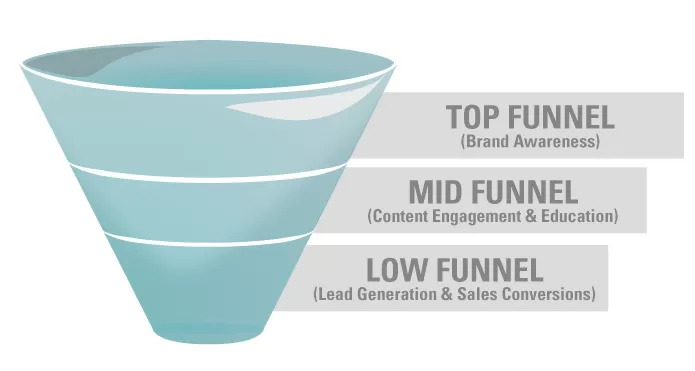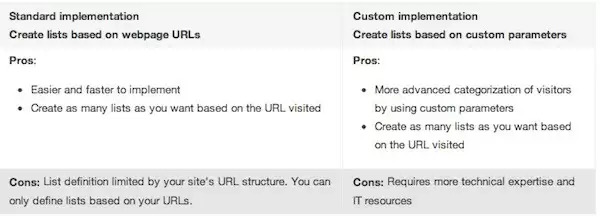In our previous post on retargeting, we discussed the basics of what it is and how it works. As a brief refresher, retargeting is the act of enticing potential customers back to your website who’ve visited without making a purchase (or taking some other desired action). This is usually accomplished with ads on the search engine results pages (SERPs) or on other relevant websites via display ad networks. In this post, we’ll delve into the more advanced retargeting method of segmenting site visitors according to their place in your brand’s sales funnel.
Market Audience Segmentation
Beyond the usual demographics of age, gender and parental status afforded by Google AdWords and Bing’s advertising platforms, marketers can segment their audience for more refined retargeting messages according to user behavior. Examples of user behavior include:
- Specific website pages visited
- The number of pages visited
- Conversion pages visited
- Shopping cart status
- Social media activity
Leveraging these insights, marketers can develop a retargeting strategy according to where their <em>qualified</em> users are in the sales funnel.
Leveraging the Sales Funnel for Retargeting
 As illustrated above, site visitors at the top of the sales funnel are simply browsing and not yet fully engaged with your brand. User behavior in this market segment often includes:
As illustrated above, site visitors at the top of the sales funnel are simply browsing and not yet fully engaged with your brand. User behavior in this market segment often includes:
- Entering the website via the home page
- Entering the website through a secondary page, then exiting without browsing other site pages
- Visiting one product or feature page
For this audience, a retargeting strategy might be to increase brand awareness by displaying ads specific to the product or services pages they’ve visited in order to stay top of mind. The mid funnel represents the market segment that has perhaps visited several website pages already; this indicates they know what they’re looking for and are searching for more information. The approach to retargeting this segment could include driving visitors to information-rich content such as case studies, white papers and customer testimonials in exchange for an email address (which you could begin to nurture in an email marketing drip campaign). Site visitors who are both informed and engaged yet haven’t converted are in the lower part of the sales funnel. Typical user behavior in this critical stage includes:
- Visiting many site pages
- Arriving at sales or form pages but not converting
For this audience, your retargeting strategy could include display ads with a strong call to action to induce them to return to key conversion pages or shopping carts. Phrases such as “free trial,” “request a demo” or “contact us” are recommended.
Implementing Advanced Retargeting
In our first post, we discussed the basics of how retargeting tags (snippets of code placed in a website footer) work in garnering lists of site users. More advanced retargeting is of course a bit more complicated, but well worth your while. Focusing on information provided by Google, refining your remarketing ads involves using custom parameters. This entails moving beyond the obvious demographics of your target audience to hone in on specific segments. Google shows the difference between standard and custom retargeting tags (as well as their respective pros and cons) as follows:  For even more effective retargeting based on market segments, you’ll likely want to consider custom dynamic tags that are specific to your site’s product or service pages. This strategy can be especially useful for e-commerce sites in retargeting users with abandoned shopping carts or those that have shown interest in a particular item. Obviously, setting up custom parameters for dynamic tags involves coding expertise. It’d be well worth your while to have a sit-down with your “techies” and iterate exactly what market segment you’re targeting with each key page of your website. Now you’re ready to take your retargeting to the next step. Stay tuned for more retargeting tips to build on your strategy coming soon!
For even more effective retargeting based on market segments, you’ll likely want to consider custom dynamic tags that are specific to your site’s product or service pages. This strategy can be especially useful for e-commerce sites in retargeting users with abandoned shopping carts or those that have shown interest in a particular item. Obviously, setting up custom parameters for dynamic tags involves coding expertise. It’d be well worth your while to have a sit-down with your “techies” and iterate exactly what market segment you’re targeting with each key page of your website. Now you’re ready to take your retargeting to the next step. Stay tuned for more retargeting tips to build on your strategy coming soon!


